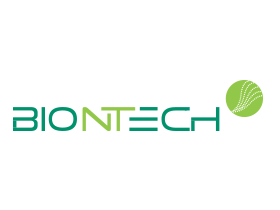BioNTech SE (BNTX.US) 2025年第三季度业绩电话会
文章语言:
简
繁
EN
Share
Minutes
原文
会议摘要
BioNTech advanced its oncology programs, initiating global phase 3 trials for Pometia and presenting updates on mRNA immunotherapies. Financially, the company reported increased revenue, partly due to a $700M collaboration with BMS, and adjusted R&D expenses. BioNTech remains committed to transforming cancer treatment through innovation and strategic alliances, planning to deepen oncology strategy insights at an upcoming event.
会议速览
BioNTech's third quarter 2025 earnings call emphasized the company's dedication to advancing immunotherapy, aiming to deliver personalized precision medicines for cancer treatment. The call highlighted the development of mRNA immunotherapies, next-generation immunomodulators, and novel combinations to address the full continuum of cancer, from early-stage tumors to metastatic disease. The presentation was structured with forward-looking statements and a disclaimer, followed by an agenda overview and introductions to the management team, setting the stage for discussions on BioNTech's growth and strategic vision in oncology.
Focus on two priority Pan-tumor programs, leveraging Promethei as a next-gen IO backbone for combination therapies. Data from MRI immunotherapy trials in A circuit show promise. Strategic investment in clinical development, scalable manufacturing, and market preparation for patient access.
Discussed advancements in Promethei and mRNA cancer immunotherapy, highlighting global trials, personalized treatments, AI integration, and successful launches of variant-adaptive COVID-19 vaccines. Emphasized strategic focus on diverse tumor types, clinical data sharing, and financial stability to support oncology transitions and patient benefits.
The dialogue outlines advancements in the Pometum I program, including registrational trials, signal-seeking studies, and novel combination therapies. It highlights ongoing efforts in small cell lung cancer, TNBC, and metastatic endometrial cancer, emphasizing the strategic expansion and differentiation of the drug's clinical impact.
Focuses on recent updates in lung cancer registrational program showing encouraging activity and manageable safety profile, and advances in mono Asian profiling for refining combination strategy, addressing immunologically challenging disease.
The dialogue discusses significant advancements in small cell lung cancer treatment, including successful dose optimization studies, promising results from ADC combinations, and strong mono agent efficacy. It highlights the confirmation of a 20mg/kg dose for future trials, the robust activity of BNT324, and the strategic approach to combination therapies aiming for deeper immune control and tumor shrinkage. The strategy emphasizes mono agent evidence before combination trials, focusing on durable safety and activity to establish a lasting presence in small cell lung cancer treatments.
The dialogue highlights the development and clinical testing of personalized neoantigen vaccines in early-stage cancers, focusing on their synergistic effects with checkpoint inhibitors. Results from Phase I trials in melanoma, HPV-positive head and neck cancer, and non-small cell lung cancer are discussed, showcasing improved response rates and potential for consolidation therapy in unresectable stage II non-small cell lung cancer. The implications for enhancing immune control in lower tumor burden settings are emphasized, along with the strategic advancement of evidence generation across various cancer types.
Study on BNT 111 monotherapy and combination with pembrolizumab in metastatic melanoma shows promising objective response rates, manageable safety, and positive long-term survival trends, guiding future treatment strategies.
The dialogue discusses mRNA therapy's effectiveness in inducing neoantigen T cell responses, linking broader responses to longer progression-free survival. It highlights the importance of immune cell PD-1 in overall survival trends and the potential for mRNA vaccines in IO-insensitive cancers. Upcoming clinical data across oncology pipeline includes ADC platform updates and phase 3 trial evaluations, aiming to refine treatment strategies and maximize efficacy in specific cancer types.
The company's third-quarter 2025 financial results highlight a significant revenue increase, primarily due to $700 million recognized from the Vms collaboration. Total revenues reached €1.519 billion, up from €1.245 billion in the same quarter of 2024. Despite a net loss of €29 million for Q3 2025, attributed to a contractual dispute settlement, the firm's financial guidance for 2025 has been revised upwards to €2.6 to €2.8 billion, reflecting a strong financial position and readiness to invest in priority programs and commercialization efforts.
Pfizer revises 2025 financial guidance, reducing R&D expenses due to portfolio management and cost optimization. Highlights ongoing oncology trials and future RD Day event, emphasizing strategic growth in cancer treatments and mRNA immunotherapies.
A question is posed regarding the market potential for treatments targeting MSF, CRC, and first-line gastric cancer, seeking insights into how the product can specifically address these conditions.
Discussion centered on the potential market for MSS CRC and first-line gastric cancer treatments, emphasizing the rational development and clinical benefits of combining VGF A with PD-1 blocking, aiming to outperform competition.
The dialogue clarified the delay in BMT 323's FDA submission due to additional data needs, aiming for a 2026 submission. It also explained the R&D guidance update, emphasizing strategic priorities and flexibility in resource allocation, with potential for spending to remain stable or increase based on late-stage program progress.
The discussion revolves around a strategic framework for drug development, emphasizing the concurrent pursuit of chemo combinations with standard care and market expansion. While there's a primary focus on establishing efficacy through chemo combinations due to their quicker initiation, ongoing efforts in combination studies with ADCs are noted, indicating a dynamic and adaptive strategy in response to competitive pressures.
Discussion revolves around upcoming Phase 2 data presentation at SCS for a triple negative breast cancer trial, highlighting efficacy and safety data, and expressing confidence in the Phase 3 trial's success.
The dialogue explores potential impacts of Harmony 3 trial modifications on PFS and OS endpoints in ongoing trials, considering new data and design evaluations for improved statistical analysis.
A discussion unfolds about the drug approval processes, emphasizing the timeline adjustments for breast and endometrial cancers. For breast cancer, ongoing phase 3 study data will support future submissions. Endometrial cancer submissions, originally planned for 2025, are now pushed to 2026 due to FDA pre-submission discussions. The need for additional narrative and photo data is highlighted, impacting timelines without altering overall strategies.
The discussion revolves around the comparative efficacy of PD-1 versus inhibitors in bispecific antibodies for lung cancer treatment. Despite promising PFS benefits, the OS benefit is seen as borderline. Experts question the superiority of the PD-1 component, emphasizing the significance of bispecifics showing OS benefits. Confidence in the bispecific class is assessed, highlighting the potential of enhanced Jeff binding over PD-1, impacting future therapeutic strategies.
The dialogue covers the clinical impact and mechanistic insights of an antibody targeting PD-1 and PD-L1 pathways, emphasizing its robust preclinical data and potential effects in tumor microenvironments. It also addresses revenue guidance, attributing the majority to the BMS collaboration, with predictable cash inflows over the next few years, and touches on stable performance in the community despite market uncertainties.
Discussion revolves around the rationale behind expanding a cancer therapy into gastric cancer, citing compelling clinical data from other GI indications and the validated approach of combining anti-angiogenic and PD-1 targeting therapies in this indication.
The dialogue explores the governance structure and decision-making process within a collaboration, focusing on who leads and decides on new clinical trials when initiating them, highlighting the dynamics between the collaborating parties.
A discussion highlighted the collaborative approach between partners, emphasizing flexibility in conducting studies and leveraging each other's product pipelines. The initiative allows for direct or indirect partner involvement, aiming to maximize opportunities for product combinations and pipeline exploitation.
要点回答
Q:What is BioNTech's vision and strategy for cancer treatment?
A:BioNTech's vision for cancer treatment involves translating science into survivors and building a global immunotherapy powerhouse. Their strategy focuses on developing combinations of precise biological agents, mRNA immunotherapies, and other target agents to create personalized, precision medicines for various solid tumors.
Q:What are the two priority Pan tumor programs that BioNTech has?
A:BioNTech's two priority Pan tumor programs are Prometic (B and T 3 to 7) and BNT T 323 (also known as TPM or her). Prometic is designed to combine checkpoint inhibition and vascular normalization in one molecule and is considered a next-generation IO backbone. BNT T 323 is a targeted ABC that is progressing towards a potential first launch before the end of the decade.
Q:How is BioNTech scaling its operations to support its strategy?
A:BioNTech is deliberately scaling its clinical development, building manufacturing from personalized to large-scale production, and preparing for commercialization in key markets to reach patients in need.
Q:What progress has BioNTech made with its partnership with BMS?
A:With BMS, BioNTech is executing a bold registrational program for Prometic. Significant progress has been made in advancing Prometic, with concrete steps taken towards registration in pivotal trials in lung cancer and on track to initiate a TNBC phase 3 trial. The company remains on track for first potential launches before the end of the decade.
Q:What is the status of BioNTech's cancer immunotherap platform and clinical trials?
A:BioNTech's cancer immunotherap platform includes a phase 2 trial update for BMS 111, a candidate in PD 1-resistant refractory melanoma, and a phase 1 trial for personalized mRNA cancer immunotherapy in first-line treatment of metastatic melanoma. The company is also focusing on signal-seeking studies to expand indications or develop novel combinations with BioNTech's assets.
Q:How is BioNTech's AI platform contributing to its drug development?
A:BioNTech's AI platform is fully integrated and includes AI tools that enable the discovery and development of innovative medicines. The company demonstrated the strength of its AI capabilities by converting complex dimensions of data into actionable insights for therapy development, which was showcased during the second AI day.
Q:What is the current status of BioNTech's pipeline programs?
A:The current status of BioNTech's pipeline programs includes ongoing registration programs for PDL1 bgsa biospecific antibody (Pometum I) in partnership with Bristol Myers, recent phase 2 updates for mRNA cancer immunotherapies, progress towards a first Bla submission for the targeted ABC known as BNT T 323, and continued evaluation of the novel combination of Tpa with Pume for the program known as Prometa.
Q:What are the potential benefits of the novel combinations being tested?
A:The potential benefits of the novel combinations being tested include maximizing clinical impact, reinforcing class differentiation, and setting up a multi-pathway to sustain the value and longevity of the drug.
Q:What are the recent updates on the first line most lung cancer program?
A:Recent updates on the first line most lung cancer program include the global phase II dose optimization studies for futami plus chemotherapy in untreated extensive stage small cell lung cancer, with encouraging activity and manageable safety profiles.
Q:How does the global data readout impact the ongoing clinical trials?
A:The global data readout supports the ongoing global Phase 3 Rosetta Lung 01 trial, which compares Citta Me plus chemotherapy against a Soli soma plus chemotherapy in treating small cell lung cancer.
Q:What is the basis for advancing the combinations of pometum with other novel agents?
A:The basis for advancing combinations of pometum with other novel agents is the significant expansion of the mono-agent database over the last 12 months, which has led to a better understanding of pometum's durability and safety, and the alignment with potential tumor expression profiles.
Q:What is the strategic approach for the development of the mRNA cancer immunotherap y?
A:The strategic approach for the development of the mRNA cancer immunotherap y involves individualized manufacturing per patient target and personal neoantigenic biology, with ongoing randomized Phase I trials testing in disease settings where lower tumor burden may allow better immune response.
Q:What are the implications of the phase I studies in melanoma?
A:The implications of the phase I studies in melanoma include results from a randomized phase Ii trial in patients who had relapsed or not responded to PD-1 treatment, with an objective response rate compared to a historical control of 10% reported for anti-PD-1 treatment in this setting.
Q:What was the primary endpoint of the study and what were the results?
A:The primary endpoint of the study was to test the null hypothesis of an overall response rate (OOR) with statistical significance. The study met this endpoint by rejecting the null hypothesis with statistical significance, and the OOR for the combination was 18%, including deep and durable responses.
Q:What were the safety findings of the study?
A:Safety was manageable, driven largely by expected mostly grade 1 and 2 cytokine-related events consistent with the mRNA platform BNT111 monotherapy.
Q:How did the combination of autogen suberin with pembrolizumab perform in terms of overall survival?
A:The combination of autogen suberin with pembrolizumab showed an overall survival rate of 88% at 12 months and 74% at 24 months, compared to 71% and 63% for pembrolizumab alone.
Q:What insights were gained regarding immune cells' expression of PDL1?
A:The data showed a trend of improved overall survival for the combination in tumors where immune cells expressed PDL1, while tumor cell PDL1 did not discriminate overall survival. This suggests that low tumor cell PDL1 should not exclude tumor types from vaccine PDL1 strategies.
Q:What upcoming clinical data are expected to be presented?
A:The company expects to continue generating and presenting new clinical data across its oncology pipeline. Upcoming data includes results from the BMT 324 study in cervical cancer and platinum-resistant OV cancer, as well as studies exploring indications, defining dose and sequence rates, and setting the additive benefit bar for home atomic novel combinations.
Q:What financial update was provided?
A:The financial update provided includes total revenues of 1519 million euros for the three months ended September 30, 2025, an increase from the same quarter in 2024. This increase was mainly driven by revenue recognition from a collaboration with BMS. Revenues, cost of sales, research and development expenses, and other operating results were also discussed, along with an update to the company's financial guidance for the 2025 financial year, which increased the revenue guidance range to 2.6 to 2.8 billion euros.
Q:What is the updated 2025 financial year guidance for research and development (R&D) expenses?
A:The updated guidance for 2025 R&D expenses is in a new range of 2 to 2.2 billion, reflecting active portfolio management and significant R&D efficiencies.
Q:How does the company view its competitive position in the markets for MSS CRC and first-line gastric cancer?
A:The company believes its product has the potential for improving clinical benefit in the high medical indication markets of MSS CRC and first-line gastric cancer, through the combination of VGF A and a PD-1 blocker.
Q:What has caused the delay in the BLA filing for BMT 323, and what is the new timeline?
A:The delay in the BLA filing for BMT 323 is due to ongoing discussions with the FDA to understand additional data needs. The plan remains to submit in 2026, with data also expected from an ongoing breast cancer study.
Q:Can you describe the company's strategy for K Tomi and the rationale behind the established, expand, elevate approach?
A:The company's strategy for K Tomi involves a three-way approach: establishing and expanding the role of the drug in combination with standard of care chemo, focusing on the first market and gathering data on ADC combinations. This is pursued in parallel with ongoing studies.
Q:What can be expected from the phase 2 data presentation at SCS in terms of efficacy and safety?
A:The phase 2 data presentation at SCS will include more efficacy data and safety data which are anticipated to provide additional confidence in the phase 3 success.
Q:Is the Rotter 0 to trial in BMP 3 adequately powered for PFS and OS endpoints in the Phase A portion?
A:It is unclear from the transcript whether the Rotter 0 to trial in BMP 3 is considered sufficiently powered for PFS and OS endpoints in the Phase A portion due to the pretest nature of the information provided.
Q:Will there be any design changes to the trials based on new information?
A:It is not specified whether there will be any design changes to the trials based on new information, but it is suggested that ongoing trials are being reevaluated with respect to new data.
Q:Is the plan to generate more data to support filing for breast cancer next year?
A:Yes, the plan involves generating more data to support filing for breast cancer next year.
Q:What is the plan for endometrial cancer submission?
A:The plan for endometrial cancer is to submit for it in 2026, which has been pushed out from 2025 due to ongoing discussions with the FDA regarding breast cancer data.
Q:Will the endometrial cancer submission timeline be extended?
A:Yes, the timeline for the endometrial cancer submission is extended from 2025 to 2026 due to discussions with the FDA regarding breast cancer data.
Q:How do you view the importance of PD-1 being better than competitors for bispecifics?
A:The confidence in the bispecific class is increasing, and the superiority of bispecifics over competitors is not based solely on PD-1 being better but on the overall clinical data showing impact on both PFS and OS. Mechanistically, preclinical data indicates robust blocking of the PD-1 pathway and additional effects targeting the molecule into the tumor microenvironment.
Q:What is the contribution of the Covid collaboration to the revenue guidance?
A:The revenue guidance includes a collaboration with BMS, and the contribution of the Covid collaboration to this guidance is quantified as part of the broader collaboration discussions, but specific minor changes due to the Covid collaboration are not detailed in the transcript.
Q:Was the decision to push po-mardi into gastric cancer based on clinical data or the mechanism of action?
A:The decision to push po-mardi into gastric cancer was based on clinical data from responses observed in combination with sherman therapy and data from other gastrointestinal indications. The mechanistic rationale includes the validated approaches of anti-angiogenic and PD-1 targeting in gastric cancer.






